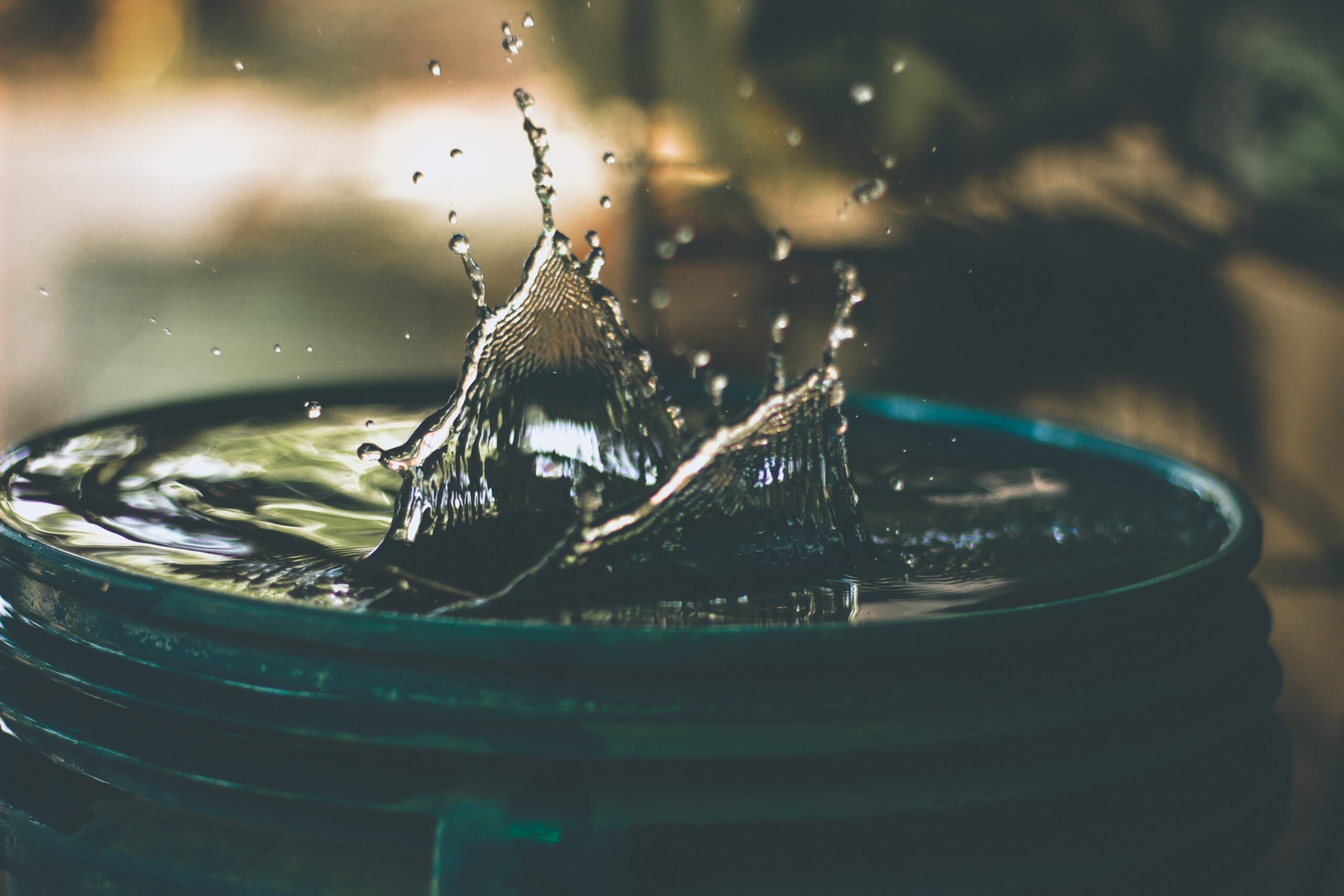In this article, you will discover important information about the safety concerns related to troubleshooting well water pressure tanks. As a homeowner who relies on well water, it is essential to understand the potential hazards that can arise during the troubleshooting process. By familiarizing yourself with these safety issues, you can ensure the well-being of your family and the integrity of your well system. So, let’s explore the key pointers to keep in mind when dealing with well water pressure tank troubleshooting.
Potential Safety Hazards
Electric Shock
When dealing with well water pressure tank troubleshooting, one of the potential safety hazards you need to be aware of is the risk of electric shock. The pressure tank is often connected to an electrical power source, and if not handled properly, it can lead to electric shock. To avoid this, always turn off the power supply before attempting any troubleshooting or maintenance tasks on the tank.
Explosions
Another significant safety hazard to consider when troubleshooting a well water pressure tank is the risk of explosions. This can occur if the tank is not properly maintained or if there is a buildup of flammable gases within the tank. To prevent explosions, it is crucial to ensure that the tank is regularly inspected, all safety valves are in place, and any signs of gas leakage are addressed immediately.
Chemical Exposure
Chemical exposure is yet another potential safety hazard associated with well water pressure tank troubleshooting. Some cleaning and maintenance chemicals used for tank maintenance can be harmful if not handled properly. When working with these chemicals, make sure to wear appropriate protective gear, such as gloves and protective eyewear, and work in a well-ventilated area to minimize the risk of chemical exposure.
Preventive Measures
Regular Maintenance
Regular maintenance of your well water pressure tank is paramount to prevent safety hazards and ensure its optimal performance. It is important to schedule periodic inspections to check for leaks, corrosion, or any signs of deterioration. Additionally, cleaning the tank and removing any sediment or debris is crucial to prevent clogs and maintain water quality.
Proper Installation
Proper installation of the well water pressure tank is also essential for safety reasons. When installing the tank, ensure that it is securely anchored and properly supported. This will prevent any accidental dislocation or damage to the tank, reducing the risk of leaks or explosions. It is highly recommended to seek professional assistance for the installation to ensure it is done correctly.
Avoiding Overpressure
Overpressure can lead to various safety hazards, such as explosions or burst pipes. It is important to avoid overpressure in your well water pressure tank by monitoring and maintaining the proper pressure levels. Regularly check the tank’s pressure gauge and adjust it as needed. It is also crucial to ensure that the tank’s pressure relief valve is in good working condition to prevent overpressure situations.

Common Well Water Pressure Tank Troubleshooting Issues
Low Water Pressure
One common issue that often requires troubleshooting with well water pressure tanks is low water pressure. This can be caused by various factors, including pump malfunctions, clogs in the water supply, or air leaks in the tank. To troubleshoot low water pressure, check for any clogs or obstructions in the water supply lines and ensure the pressure switch and pressure tank settings are appropriately adjusted.
Water Hammering
Water hammering, also known as hydraulic shock, is a sudden loud noise caused by a rapid change in water flow within the pipes. It can put excessive strain on the well water pressure tank and the entire plumbing system, leading to potential damage or leaks. To troubleshoot water hammering, consider installing a water hammer arrestor or adjusting the pressure switch settings to reduce sudden pressure fluctuations.
Leaks and Burst Pipes
Leaks and burst pipes are serious issues that require immediate attention when troubleshooting a well water pressure tank. These problems can result from corrosion, weakened pipe connections, or excessive pressure within the tank. When dealing with leaks or burst pipes, it is crucial to turn off the water supply and electricity, assess the damage, and consult a professional plumber for repairs.
Frequent Pump Cycling
Frequent pump cycling occurs when the pump turns on and off more frequently than normal, leading to increased wear and tear on the system. This problem can be caused by incorrect pressure settings, air leaks in the tank, or waterlogged pressure tanks. Troubleshooting frequent pump cycling involves checking and adjusting the pressure switch settings, inspecting the tank for air leaks, and ensuring the tank’s air charge is adequate.
Electrical Troubleshooting
Checking Power Supply
Before conducting any electrical troubleshooting on your well water pressure tank, it is essential to check the power supply. Turn off the electricity to the tank by switching off the circuit breaker or disconnecting the power source. Use a voltage tester to confirm that there is no power running to the tank. This step is crucial to prevent the risk of electric shock.
Testing Pressure Switch
The pressure switch plays a vital role in regulating the operation of the well pump. To troubleshoot any issues related to the pressure switch, you can test its functionality using a multimeter. Follow the manufacturer’s instructions to ensure safe and accurate testing. If the pressure switch is faulty, it may need to be replaced to restore normal operation of the well pump.
Inspecting Wiring
Inspecting the wiring of your well water pressure tank is crucial to identify and address any potential electrical hazards. Check for any loose or damaged wires, exposed connections, or signs of overheating. If you notice any issues with the wiring, it is important to consult a professional electrician to handle the repairs, as dealing with electrical wiring can be dangerous if not done correctly.

Mechanical Troubleshooting
Checking Tank Pressure
Checking the tank pressure is an essential step when troubleshooting mechanical issues with your well water pressure tank. Use a pressure gauge to measure the tank’s pressure and compare it to the recommended operating range specified by the manufacturer. If the tank pressure is outside the recommended range, adjustments may be necessary, such as adding or releasing air from the tank.
Examining Water Pressure Gauge
The water pressure gauge on the well water pressure tank provides valuable information about the system’s performance. A malfunctioning or inaccurate pressure gauge can make troubleshooting difficult. Therefore, it is important to visually examine the gauge for any signs of damage or malfunctioning. If the gauge appears faulty, consider replacing it to accurately monitor the water pressure.
Testing Air Charge
For well water pressure tanks that utilize an air charge system, it is crucial to regularly test the air charge. The air charge is the amount of compressed air in the tank that provides pressure to push the water out. Use an air pressure gauge to measure the air charge and compare it to the recommended range. If the air charge is outside the recommended range, adjustment or replenishment may be necessary.
Inspecting Check Valve
The check valve is responsible for controlling the water flow in one direction and preventing backflow. Inspecting the check valve is essential when troubleshooting mechanical issues with the well water pressure tank. Check for signs of damage, debris, or obstructions that may affect its functionality. If the check valve is faulty, it should be promptly replaced to avoid system malfunctions or leaks.
Safety Guidelines for Troubleshooting
Turning off Power
Before conducting any troubleshooting or maintenance tasks on your well water pressure tank, always remember to turn off the power supply. This can be done by switching off the circuit breaker or disconnecting the power source. Turning off the power ensures your safety and reduces the risk of electric shock during the troubleshooting process.
Using Personal Protective Equipment
When troubleshooting a well water pressure tank, it is essential to prioritize your safety by wearing appropriate personal protective equipment (PPE). This includes gloves, safety goggles, and protective clothing. PPE helps protect you from potential hazards, such as chemical exposure or physical injury, ensuring a safe troubleshooting experience.
Properly Isolating Tank
Before starting any troubleshooting or maintenance tasks, it is important to properly isolate the well water pressure tank from the rest of the system. This involves closing isolation valves and draining the tank of any residual water or pressure. By isolating the tank, you prevent unintentional water flow or pressure fluctuations, minimizing the risk of accidents or system damage.
Releasing Pressure Safely
To release pressure safely from your well water pressure tank during troubleshooting, it is crucial to follow the manufacturer’s instructions. Most tanks have a pressure relief valve that can be opened to release excess pressure. However, it is important to be cautious when doing this, as hot water or steam can be forcefully expelled. Always ensure you are standing clear and wearing appropriate PPE.

When to Call a Professional
Limited Experience or Knowledge
If you have limited experience or knowledge when it comes to well water pressure tank troubleshooting, it is advisable to call a professional. Well systems can be complex, and attempting troubleshooting without the necessary expertise can lead to further complications or safety hazards. Hiring a professional ensures that the issue is properly diagnosed and resolved without causing further damage.
Lack of Proper Tools and Equipment
Well water pressure tank troubleshooting often requires specific tools and equipment. If you do not have access to the necessary tools, it is best to call a professional. Using improper tools or makeshift solutions can result in ineffective troubleshooting and potential damage to the system. Professionals have the right tools and expertise to accurately diagnose and resolve issues.
Complex or Severe Issues
For complex or severe issues with your well water pressure tank, it is recommended to seek professional assistance. Certain problems may require specialized knowledge or equipment that only professionals possess. They have the expertise to tackle complex troubleshooting scenarios and implement appropriate solutions, ensuring the optimal performance and safety of your well system.
Risk of Electrical or Chemical Hazards
If there is a risk of electrical or chemical hazards during the troubleshooting process, it is crucial to call a professional. Dealing with electrical wiring or hazardous chemicals can be dangerous if not handled properly. Professionals have the necessary training and experience to safely handle such situations, minimizing the risk of accidents, injuries, or further damage to the system.
Emergency Response
Detecting Gas Leaks
Gas leaks can pose a significant safety risk when troubleshooting a well water pressure tank. If you detect a gas leak or suspect a gas leak, it is important to take immediate action. Look for signs such as unusual odors, hissing sounds, or visible damage to gas lines. If a gas leak is detected, evacuate the area immediately and contact emergency services.
Evacuating the Area
In the event of a safety emergency or hazardous situation, it is essential to prioritize the safety of yourself and others by evacuating the area. This includes leaving the immediate vicinity of the well water pressure tank and moving to a safe location. Ensure that everyone in the area is aware of the situation and follows the necessary evacuation procedures.
Contacting Emergency Services
In the case of an emergency related to your well water pressure tank, such as a gas leak or explosion, it is critical to contact emergency services immediately. Dial the appropriate emergency number in your area to report the incident. Emergency services will be able to provide the necessary assistance and ensure the safety of everyone involved.

Potential Risks of DIY Troubleshooting
Voiding Warranty
Attempting DIY troubleshooting on your well water pressure tank without proper knowledge or expertise can void the manufacturer’s warranty. Manufacturers often require professional installation and servicing to maintain the warranty. If you choose to troubleshoot the tank yourself and cause damage, you may be responsible for the repair costs without any warranty coverage.
Ineffective Repairs
DIY troubleshooting may lead to ineffective repairs, as you may not have the necessary skills or tools to accurately diagnose and resolve the issue. This can result in recurring problems or further damage to the system. Hiring a professional ensures that the troubleshooting is done correctly and that the problem is resolved effectively, preventing future issues.
Delayed or Incomplete Troubleshooting
DIY troubleshooting often takes longer to complete, as you may need to research or acquire the necessary knowledge and tools. This can result in delayed repairs or incomplete troubleshooting. Hiring a professional ensures a faster and more efficient troubleshooting process, minimizing any inconvenience caused by system malfunctions.
Compromised System Performance
If DIY troubleshooting is not done correctly, it can compromise the overall performance of your well water pressure tank system. Incorrect repairs or adjustments can lead to reduced efficiency, increased energy consumption, or even complete system failure. Professional troubleshooting ensures that the system performs optimally, providing reliable water supply and maintaining its longevity.
Conclusion
Safety should always be a top priority when troubleshooting a well water pressure tank. Understanding the potential safety hazards, following preventive measures, and adhering to safety guidelines are essential for a successful and safe troubleshooting process. While some issues can be addressed through DIY troubleshooting, it is important to know when to call a professional to minimize risks and ensure the best outcome for your well water pressure tank system. By prioritizing safety and taking necessary precautions, you can troubleshoot your well water pressure tank effectively and maintain a reliable water supply for your household.

